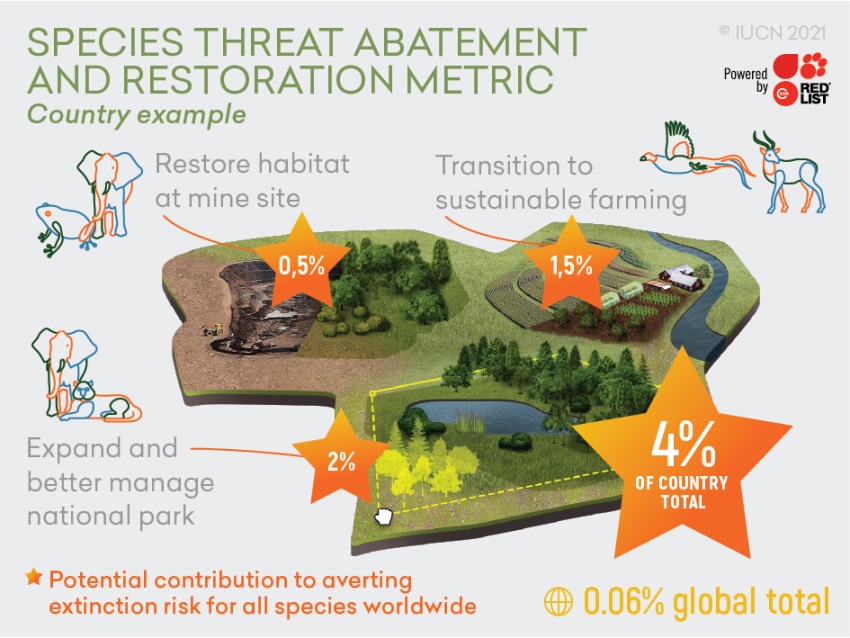- Biodiversity is declining at a faster rate than at any other time in human history, driven by unsustainable economic activity.
- Businesses, governments and civil society around the world lack the ability to measure their potential positive impacts on biodiversity in comparable and consistent ways.
- To deliver the post-2020 global biodiversity framework, which will guide conservation action over the next decade and beyond, we need to be able to quantify contributions to conserving biodiversity around the world.
- The new Species Threat Abatement and Restoration (STAR) metric estimates the potential contributions of specific actions in specific places towards international biodiversity targets.
- The STAR metric can help all actors – companies, the finance industry, governments and civil society – better plan projects that would bring benefits for threatened species, assess biodiversity risk, and align contributions to achieve global targets.
The ‘transformational change’ required to bend the curve of biodiversity loss will only be realised if everyone can identify and deliver their potential contributions towards global biodiversity targets. As with climate change mitigation, it is essential to quantify contributions by specific actors to achieve global impact.
The post-2020 global biodiversity framework will guide global conservation action over the next decade, aligned in turn to the 2030 Agenda for Sustainable Development. To deliver the post-2020 framework, we need to be able to quantify and add up potential contributions to biodiversity conservation from around the world. The ability to quantify contributions will make it easier to reward positive action, as well as highlighting where change is needed to mitigate negative impact.
Enabling effective conservation action would in turn improve human well-being, prosperity and health, which are inextricably linked to the health of the natural world.
 Photo: IUCN
Photo: IUCN
The Species Threat Abatement and Restoration (STAR) metric allows business, governments and civil society to quantify their potential contributions to stemming global species loss.



